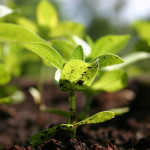Research Shows Evergreen Liquid Plant Food Ltd is a Superior Product
Liquid food grade ortho-phosphate used in the production of 5-20-5, 9-18-9 and 3-18-18 by Evergreen Liquid Plant Food Ltd has proven itself superior over dry fertilizers, liquid polyphosphates and ortho-polyphosphate mixes, using cheaper sources of phos-acid.
An overwhelming amount of research, test plots and full field examples have undoubtedly proven the advantages of selecting a high-grade source of starter fertilizer.
Liquid food grade ortho-phosphate used in the production of 5-20-5, 9-18-9 and 3-18-18 by Evergreen Liquid Plant Food Ltd has proven itself superior over dry fertilizers, liquid polyphosphates and ortho-polyphosphate mixes, using cheaper sources of phos-acid.
Howard H Johnson from the University of Minnesota, along with three other universities – University of Wisconsin, Kansas State University and Michigan State University – proved that the plant gets the greatest uptake of P205 when an ortho-phosphate is used. As the quality of the ortho-phosphate declines, i.e. when green acid is used, the uptake of P205 is reduced. This declines even further when polys are used, liquid and then dry mixes.
If ideal conditions are met i.e., sufficient heat in the soil, adequate amount of moisture, availability of oxygen, no compaction of or crusted over soil, microbial life has not been killed off by harsh chemicals and/or strong toxic acids – then the process of making phosphorus available is still very slow.
Arden B. Anderson, PhD, in his book “Science of Agriculture”, talks about a scientist named Kotelev (1955) who “…using radioactive P found that the diffusion of phosphorus in sterile soil was very slow and that uptake by roots was either lacking or negligible. The diffusion of phosphorous in the presence of bacteria was a much more rapid key to the importance of bioactive soil.” (page 102)
On page 129 of his book, Anderson quotes, “To produce sugar through photosynthesis, the plant must have phosphate. The mobility and availability of phosphate depend on microbiology, both during the living processes of microbial translocation and during microbial death and decomposition.
In other words, the microbial life around the roots are devouring minerals as food, phosphorous being part of this. The minerals in the soil are in the polyphosphate form. In the process of the microbe eating the phosphate, they chelate it, converting it to the form the plant can use, ortho-phosphate. (This also brings up the question for discussion – why would you buy more of the same material that is not available to the plant and is there already? This has to be addressed individually and with a complete soil analysis. It would make more sense to add something that would aid and multiply the microbial population to increase the availability of nutrients.)
When the soil is still cool in the spring, the microbes are not active. Add some orthophosphate in the form of a food grade phosphate that is friendly to the soil and microbes. The plant can have access to it right away instead of waiting for the soil to wake up. Recorded yield gains testify this to be true. By using friendly acid, no soil life is killed off and no harmful, heavy metals are introduced to this delicate environment we depend on.
To find out more about our starter fertilizers and pricing, please contact us.




